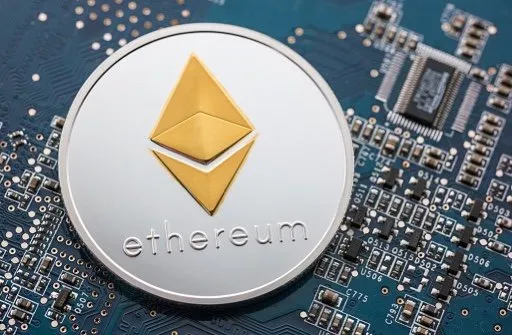Introduction
This post reviews the concept of the Liquidity Provider and how the Liquidity Provision Rewards for the WLEO-ETH Liquidity Pool are better then the typical liquidity pool.
First, let’s review what a being Liquidity Provider means.

Define Liquidity Pool Provider
The definition of being a Liquidity Provider, one who deposits dollar equivalents of trading pairs into the trading pools in exchange for a portion of the transaction fees paid by traders who trade or swap assets on these decentralized exchanges.
Safe and Profitable
Providing Liquidity is profitable and safe, so it is attracting investors from outside of cryptocurrencies usual ranks, and it has resulted in billions of dollars moving into DEFI this year.
Define Dollar Equivalent Pairs
A Dollar Equivalent Pair is the same dollar value of each member of the pair. This means one dollar worth of each member of the pair.
Example
For example if Ethereum was worth one dollar, and Bitcoin was worth ten dollars, a dollar equivalent pair would be ten Ethereum worth ten dollars and one Bitcoin worth ten dollars. So to join the liquidity pool called ETH-BTC you would deposit Ethereum and Bitcoin in a ten to one ration.
Fractions are ok
But you don’t need Ten Ethereum and one Bitcoin to join the pool. You just need to add them to the pool in a ten to one ratio. So if you have one Ethereum and one tenth a Bitcoin you can join the ETH-BTC pool because your adding Ethereum and Bitcoin in a ten to one ratio by dollar value.
Scaleability
This ability to start small, providing the ratio is correct is called Scaleability.
Scaleability means small investors are welcome. That’s the one of the beauty’s of Cryptocurrency and Decentralized Finance, scaleability you can start small.
How Leofinance WLEO-ETH Pair is Different
If you become a Liquidity Provider, the platform pays you a percentage of all the transaction fees for swaps or trades done that day, for the trading pair you provide liquidity for. As long as there’s lots of transactions or large monetary incentives being a Liquidity Provider can be very profitable. But your percentage of the rewards is in proportion to your percentage of the pool. So the larger the pool gets the smaller your rewards are.
WLEO-ETH pays more
But in Leofinance’s case the WLEO-ETH pool pays Liquidity Providers an additional stream of income from our daily inflation. So unlike any other Liquidity Pool, Leofinance pays WLEO-ETH Liquidity Providers profits in addition to, the transaction fees with 15% of the daily inflation of the Leo token! Wow!
WLEO-ETH : the longer you stay, the more it pays.
Leofinance pays you by the day, so the more days, the more rewards. So this Liquidity Pool pays a second stream of income and it pays you more rewards, the longer you stay in the pool.
So, most liquidity pools pay you only a percentage of the transaction fees, which goes down as the pool gets bigger. But Leofinance WLEO-ETH pays additional income from the 15% of the Leo tokens reward pool and the longer you stay in the pool, the more rewards you get. This differs from the usual liquidity pool rewards which go down the longer your in the pool, so liquidity pool providers get into a pool early and then withdrawal their money after a short period of time. Instead liquidity providers in the WLEO-ETH pool get rewards from a second source, which rewards them for staying in the pool and the rewards go up, the longer they stay.
Liquidity Pool stability and Token Price Stability
Cryptocurrency is risky due to price volatility. But Leofinances rewards for WLEO-ETH liquidity providers provides stability to the pool and the token price, by reducing selling pressure. When liquidity providers withdrawal their money from pools because rewards based on transaction fees are going down, they sell their tokens to buy the tokens they need for the next liquidity pool they will invest in, and this creates selling pressure which frequently lowers the token price.
This is the opposite of what happens when a liquidity pool is new and people buy tokens so they can invest in the pool. They create buying pressure which usually raised the token price.
So Leofinance added this incentive to their pool which adds a method of profit and incentivizes price stability.
To Review
So the Leofinance Liquidity Pool WLEO-ETH not only provides rewards by the same method as all other pairs on Uniswap, it provides a second reward source to increase rewards to Liquidity Providers and it provides those rewards in greater amounts the longer you stay in the pool, which is the opposite of what you see in every other liquidity pool because as the pools grow the rewards from transaction fees go down. So your rewards are greater then regular pools and last longer then other pools. Once again, this is the only pool I know of that does this, so it is unique.
One more great feature
WLEEO-ETH Rewards can be in WLEO or ETH

An additional special feature, which @khaleelzaki added is that you have the option of receiving your Leofinance Rewards in Ethereum, if your entrance to the Leofinance Community was through the Metamask new account signup process. This was an option created by @khaleelzaki the leader of Leofinance, to bring investors and authors from other blockchains into our ecosystem. This is mediated through an innnovative Metamask based account signup system, and uses @cardboards swap.app to facilitate the Leo to Ethereum transaction, so it's seamless to the Ethereum investors to receive their Leo Rewards in their Ethereum wallets as Ethereum.
Last words
This pool pays a better APR or percentage yield then most pools, and it pays it longer then most pools and it allows you to convert your writing to Ether! Currently worth $600 USD a Token and from there to Bitcoin, currently worth $24,000 USD per token.
If you like to write about finance and cryptocurrency, and you would like to join a community of people who read and write about those same two topics, plus possibly earn Cryptocurrency tokens like Leo, Hive, Ethereum and Bitcoin, I suggest you check this opportunity out.
@shortsegments

Cryptocurrency, Bitcoin, Ethereum, Ether and Decentralized Finance